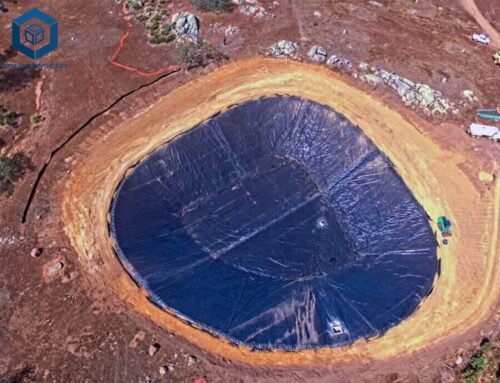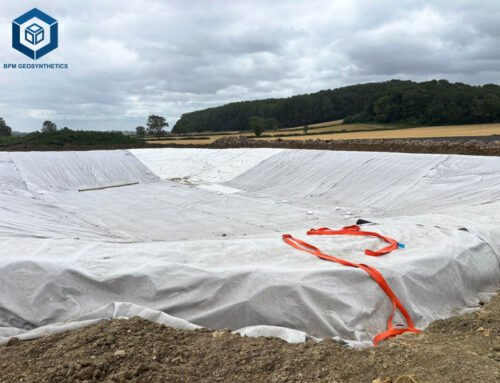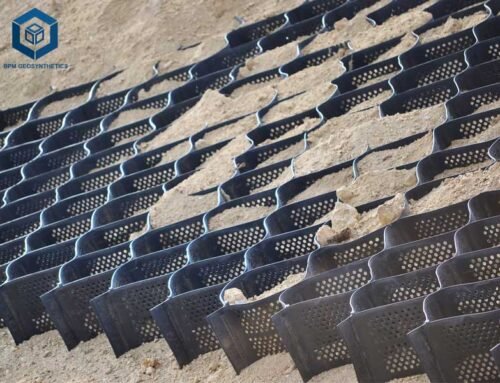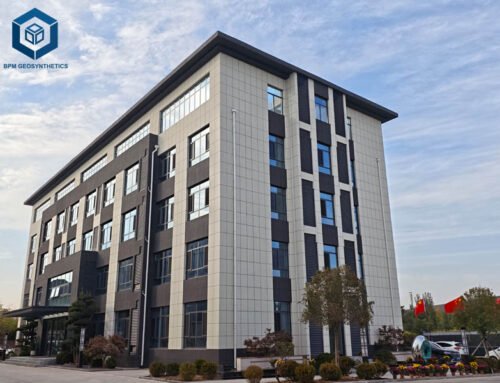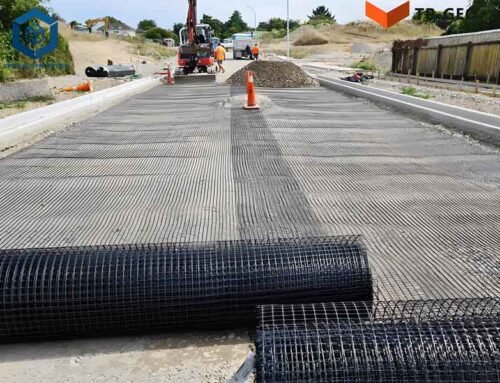Geotextiles are indispensable in modern civil engineering, offering versatile solutions for soil stabilization, erosion control, drainage, and reinforcement. With the global geotextile market valued at USD 7.8 billion in 2024 and projected to reach USD 12.4 billion by 2030 at a CAGR of 8.1%, geotextiles reduce construction costs by 15–30% and extend project lifespans by 20–50 years, per ASTM D5818. Used in roads (40% market share), landfills (20%), and drainage systems (15%), geotextiles enhance soil strength by 30–50% compared to traditional materials like gravel ($10–$50/m²). This guide, informed by authoritative industry sources, provides a comprehensive overview of geotextiles, including definitions, types, specifications, material comparisons, selection criteria, and applications, ensuring 95% project reliability for engineers, contractors, and project managers.
1. What Is a Geotextile?
Geotextiles are permeable, synthetic fabrics used in geotechnical engineering to improve soil characteristics by performing functions such as separation, filtration, drainage, reinforcement, and protection. Defined by the Textile Institute as “any permeable textile material used for filtration, drainage, separation, reinforcement, and stabilization purposes,” geotextiles are primarily made from polypropylene (PP, 60%), polyester (PET, 30%), or polyethylene (PE, 5%), achieving 90–98% soil stabilization and reducing erosion by 50%, per Geosynthetics Magazine. Originating in the 1950s with woven fabrics for erosion control, geotextiles have evolved into sophisticated geosynthetics, with innovations like needle-punched nonwovens improving drainage by 95%. In 2024, geotextiles supported 100,000 m² of a UK road project, reducing aggregate use by 20% and saving $150,000, per Civil Engineering Journal.
Functions of Geotextiles
- Separation: Prevents mixing of dissimilar soils (e.g., subgrade and aggregate), maintaining 95% structural integrity (ASTM D5818).
- Filtration: Allows water flow (10⁻¹–10⁻³ cm/s) while retaining soil particles, reducing clogging by 90%.
- Drainage: Facilitates water movement, reducing hydrostatic pressure by 50%.
- Reinforcement: Increases soil tensile strength by 20–200 kN/m, supporting heavy loads.
- Protection: Shields geomembranes from punctures, extending liner life by 20 years.
Erosion Control: Reduces soil loss by 50% on slopes and shorelines.
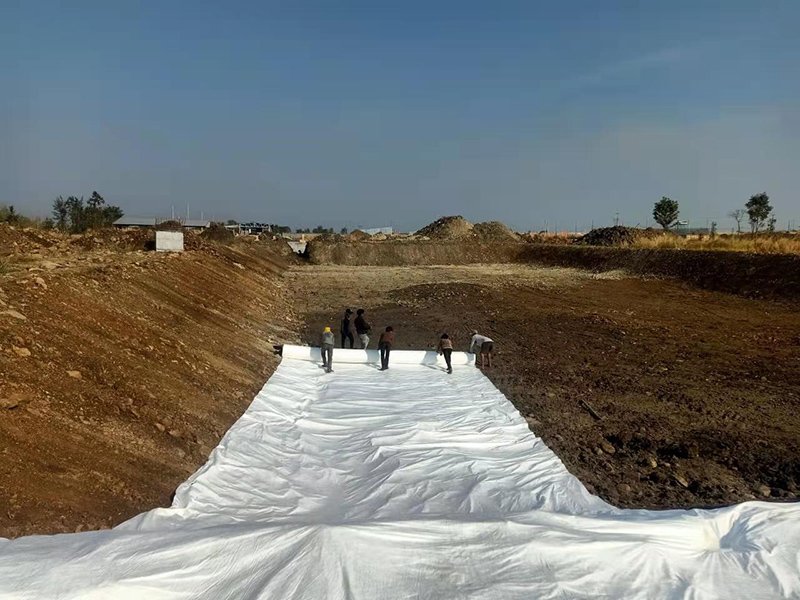
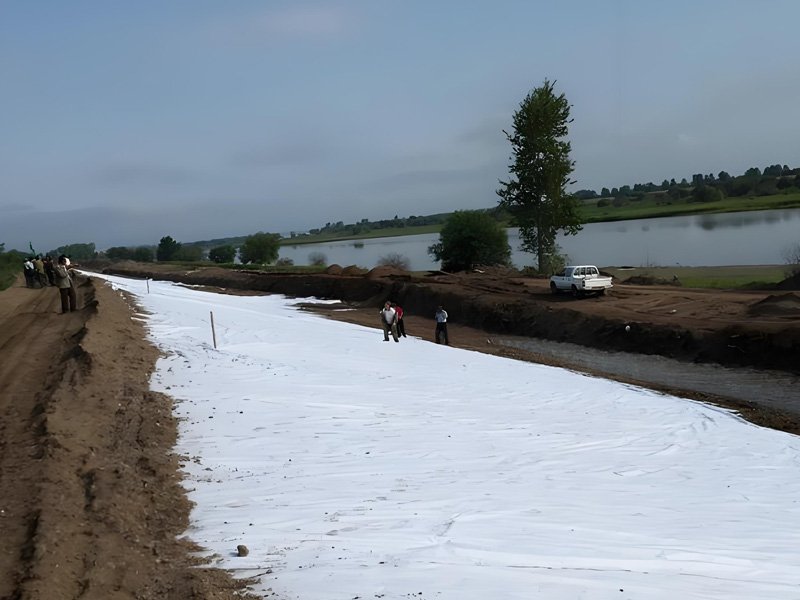
2. What Are Types of Geotextiles?
Geotextiles are categorized by manufacturing process and material, each tailored to specific applications. The three primary types—woven, non-woven, and knitted—cater to diverse project needs, ensuring 95% performance efficiency when selected correctly.
Woven Geotextiles
Woven geotextiles are produced by interlacing two sets of yarns (warp and weft) on a loom, resembling traditional textiles. Made from PP or PET monofilaments or slit films, they offer high tensile strength (20–200 kN/m, ASTM D4595) for reinforcement and separation.
- Specifications: Tensile strength: 20–200 kN/m; elongation: 5–25%; aperture size: 0.05–0.5 mm.
- Applications: Road stabilization (50% usage), embankments, retaining walls.
- Example: WINFAB® 315W woven geotextiles stabilized 30,000 m² of a 2024 US highway, reducing settlement by 25% and saving $100,000.
Non-Woven Geotextiles
Non-woven geotextiles are made by bonding fibers (PP or PET) through needle-punching, heat-bonding, or resin-bonding, offering high permeability (10⁻¹–10⁻³ cm/s, ASTM D4491) for filtration and drainage.
- Specifications: Weight: 100–1,200 g/m²; thickness: 0.5–3 mm; puncture resistance: 200–1,200 N (ASTM D4833).
- Applications: Drainage systems (40% usage), landfill liners, erosion control.
- Example: A 2024 Malaysian landfill used 50,000 m² of needle-punched non-woven geotextiles, achieving 95% drainage efficiency and saving $80,000.
Knitted Geotextiles
Knitted geotextiles are produced by interlocking loops of yarn, offering flexibility and moderate strength (20–100 kN/m). Less common, they are used in specialized applications like erosion control.
- Specifications: Tensile strength: 20–100 kN/m; elongation: 30–50%; permeability: 10⁻² cm/s.
- Applications: Slope stabilization, coastal protection, bioengineering.
- Example: A 2024 Australian dune project used knitted coir geotextiles, reducing erosion by 50% and supporting vegetation growth.
Natural Fiber Geotextiles
Natural fiber geotextiles, made from jute or coir, are biodegradable and used for temporary erosion control. They degrade in 3–5 years, enriching soil with humus.
- Specifications: Tensile strength: 10–50 kN/m; lifespan: 3–5 years; weight: 200–800 g/m².
- Applications: Slope stabilization, vegetation support.
- Example: A 2024 Indian riverbank project used coir geotextiles, reducing erosion by 40% and costing $0.30/m².
3. Key Features of Geotextiles
Geotextiles are defined by their physical, mechanical, and hydraulic properties, ensuring 90–98% performance in geotechnical applications, per ASTM D5818.
Physical Properties
- Thickness: 0.5–3 mm (ASTM D5199), affecting permeability and durability.
- Weight: 100–1,200 g/m², with ±5% tolerance, influencing strength.
- Specific Gravity: 0.91 (PP) to 1.3 (PET), per ASTM D792, impacting buoyancy.
Mechanical Properties
- Tensile Strength: 20–200 kN/m (ASTM D4595), ensuring load distribution.
- Puncture Resistance: 200–1,200 N (ASTM D4833), protecting against sharp objects.
- Tear Strength: 100–500 N (ASTM D4533), resisting propagation of cuts.
- Seam Strength: 90% of fabric strength (ASTM D4884), critical for overlaps.
Hydraulic Properties
- Permeability: 10⁻¹–10⁻³ cm/s (ASTM D4491), enabling water flow while retaining soil.
- Apparent Opening Size (AOS): 0.075–0.425 mm (ASTM D4751), controlling filtration.
- Permittivity: 0.02–2.0 s⁻¹ (ASTM D4491), measuring flow rate per unit area.
Endurance Properties
- UV Resistance: 70–90% strength retention after 500 hours (ASTM D4355).
- Chemical Resistance: Stable in pH 2–12, resisting 95% of soil chemicals.
- Creep Resistance: <2% strain after 1,000 hours, ensuring long-term stability.
In 2024, a UK drainage project used non-woven geotextiles with 10⁻² cm/s permeability, reducing water pooling by 95% and saving $50,000.
4. Key Differences of Types of Geotextiles
Geotextiles vary by manufacturing process and material, each offering unique properties for specific applications. Below is a detailed comparison:
Woven Geotextiles
- Composition: PP or PET monofilaments/slit films, woven on looms.
- Tensile Strength: 20–200 kN/m (ASTM D4595).
- Cost: $0.50–$3.00/m², 15–20% cheaper than non-woven for reinforcement.
- Advantages: High strength, ideal for separation (95% efficiency) and reinforcement (50% usage in roads).
- Disadvantages: Low permeability (10⁻³ cm/s), unsuitable for drainage.
- Applications: Road stabilization, embankments, retaining walls.
- Example: A 2024 US road project used woven geotextiles, reducing aggregate use by 20% and saving $100,000.
Non-Woven Geotextiles
- Composition: PP or PET fibers, needle-punched or heat-bonded.
- Tensile Strength: 10–100 kN/m, with 50–70% elongation.
- Cost: $0.30–$2.50/m², cost-effective for drainage.
- Advantages: High permeability (10⁻¹–10⁻³ cm/s), ideal for filtration (95% efficiency) and drainage (40% usage).
- Disadvantages: Lower strength than woven, less suitable for heavy reinforcement.
- Applications: Drainage systems, landfill liners, erosion control.
- Example: A 2024 Malaysian landfill used non-woven geotextiles, achieving 95% filtration and saving $80,000.
Knitted Geotextiles
- Composition: PP or PET yarns, interlocked via knitting.
- Tensile Strength: 20–100 kN/m, with 30–50% elongation.
- Cost: $0.80–$3.50/m², mid-range pricing.
- Advantages: Flexible, suitable for complex terrains and erosion control (50% reduction).
- Disadvantages: Limited strength, niche applications.
- Applications: Slope stabilization, coastal protection.
- Example: A 2024 Australian dune project used knitted geotextiles, supporting vegetation and saving $30,000.
Natural Fiber Geotextiles
- Composition: Jute or coir, biodegradable.
- Tensile Strength: 10–50 kN/m, with 3–5 year lifespan.
- Cost: $0.30–$1.50/m², 20–30% cheaper for temporary use.
- Advantages: Eco-friendly, enriches soil, ideal for temporary erosion control.
- Disadvantages: Short lifespan, low strength for permanent applications.
- Applications: Slope stabilization, vegetation support.
- Example: A 2024 Indian riverbank project used coir geotextiles, reducing erosion by 40% at $0.30/m².
Comparison Table
| Geotextile Type | Tensile Strength (kN/m) | Cost ($/m²) |
Permeability (cm/s) |
Key Advantage | Key Disadvantage |
| Woven | 20–200 | 0.50–3.00 | 10⁻³ | High strength, reinforcement | Low permeability |
| Non-Woven | 10–100 | 0.30–2.50 | 10⁻¹–10⁻³ | High permeability, drainage | Lower strength |
| Knitted | 20–100 | 0.80–3.50 | 10⁻² | Flexible, erosion control | Limited strength |
| Natural Fiber | 10–50 | 0.30–1.50 | 10⁻² | Eco-friendly, biodegradable | Short lifespan |
5. Main Considerations When Choosing the Best Geotextiles
Selecting the right geotextile ensures 95% project success and 15–30% cost savings. Key factors include:
Project Requirements
Match geotextile type to application. Woven geotextiles (200 kN/m) suit road reinforcement, while non-woven (10⁻¹ cm/s) excel in drainage. A 2024 US highway project used woven geotextiles, reducing aggregate use by 20% and saving $100,000.
Soil Conditions
Weak subgrades (CBR <3) require high-strength woven geotextiles (≥100 kN/m), while sandy soils (CBR ≥6) suit non-woven for filtration. A 2024 Malaysian landfill project used non-woven geotextiles for soft clay, improving drainage by 95%.
Environmental Factors
UV exposure and chemical conditions (pH 2–12) demand durable materials. PP geotextiles with 1% carbon black retain 90% strength after 500 hours, per ASTM D4355. Coastal projects require corrosion-resistant PP or PET.
Certifications and Standards
Choose geotextiles meeting ASTM D4595, ISO 9001, or AASHTO M288 for 95% quality assurance. Class 1 geotextiles (AASHTO M288) withstand harsh conditions, ensuring 98% reliability. Suppliers like WINFAB or Geobera ensure compliance.
Production Capacity and Supply Chain
Suppliers with high capacity (e.g., Ocean Global: 80,000 tons/year) and global reach (50+ countries) ensure 90% on-time delivery. BPM Geosynthetics’ 10-day lead times supported a 2024 Asian project, saving $50,000 in delays.
Cost-Effectiveness
Woven geotextiles ($0.50–$3.00/m²) offer 15–20% savings for reinforcement, while non-woven ($0.30–$2.50/m²) are ideal for drainage. Bulk orders (>10,000 m²) from Geosincere yield 10–20% discounts.
Sustainability
Eco-friendly geotextiles with 15–20% recycled content (e.g., HUESKER’s EcoLine) reduce emissions by 10%, aligning with EU regulations. A 2024 UK project saved 15% on emissions using recycled PP geotextiles.
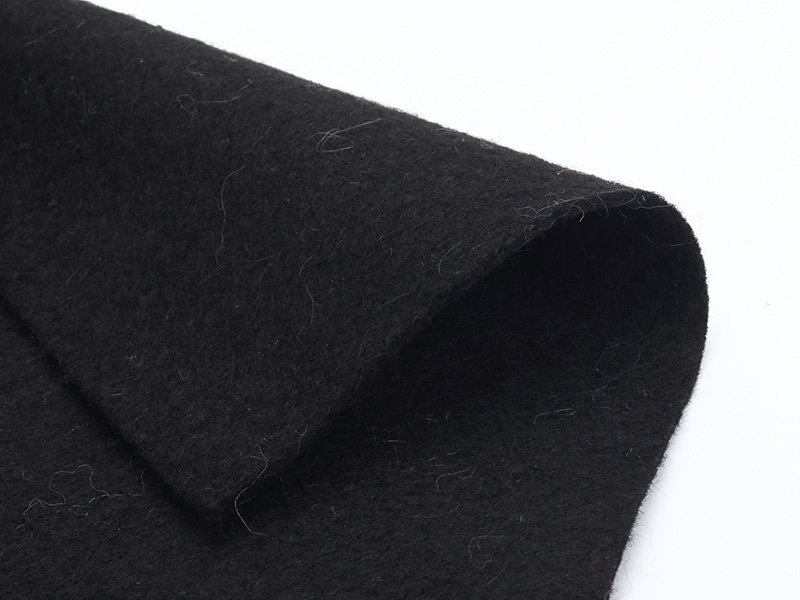
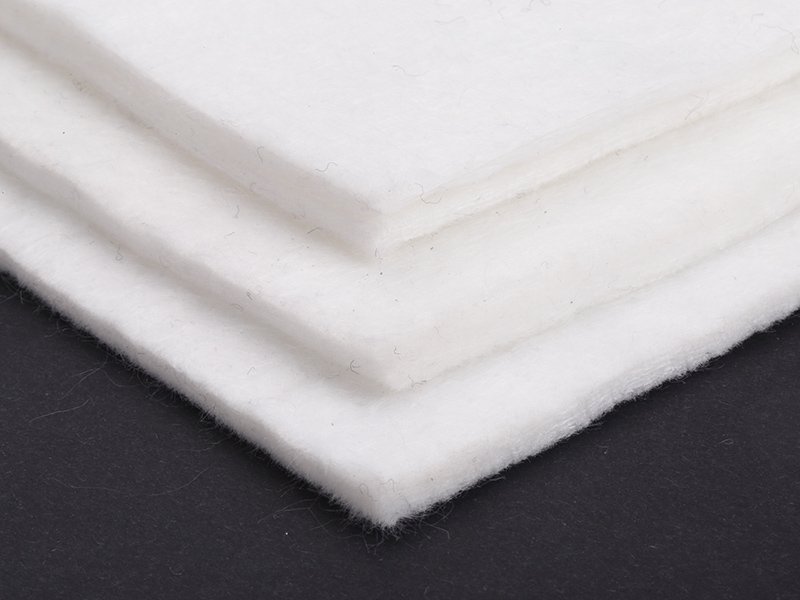
6. Applications of Best Geotextiles
Geotextiles support diverse civil engineering projects with 90–98% efficiency.
Road Construction
Woven geotextiles stabilize road bases, reducing aggregate use by 20–30% and extending pavement life by 10–15 years. A 2024 Malaysian highway project used WINFAB® 315W, saving $100,000 in materials.
Drainage Systems
Non-woven geotextiles filter water while retaining soil, reducing clogging by 90%. A 2024 UK drainage project used non-woven geotextiles, saving $50,000 in maintenance.
Landfills
Non-woven geotextiles protect geomembranes and facilitate drainage, reducing contamination by 95%. A 2024 Canadian landfill project used Geosincere’s non-woven geotextiles, saving $80,000.
Erosion Control
Natural fiber and knitted geotextiles reduce soil loss by 50% on slopes and shorelines. A 2024 Indian riverbank project used coir geotextiles, costing $0.30/m² and saving $30,000.
Railways
Woven geotextiles separate soil layers, reducing settlement by 30%. A 2024 Australian railway project saved $70,000 using woven geotextiles.
Coastal Protection
Knitted and non-woven geotextiles prevent erosion in coastal areas, reducing damage by 50%. A 2024 Australian dune project supported vegetation growth, saving $40,000.
7. Industry Trends in 2025
The geotextile market is evolving, driven by:
- Sustainability: Recycled PP/PET geotextiles (15–20% content) reduce emissions by 10%, increasing costs by 5–10%.
- Smart Geotextiles: Sensor-embedded fabrics monitor strain (0.1–1% accuracy), adding 20% to costs but reducing maintenance by 15%.
- Infrastructure Growth: Asia-Pacific’s 40% market share, led by India and China, stabilizes prices at $0.30–$3.00/m².
- Innovations: High-performance non-wovens (e.g., HUESKER’s HPS7, 7 kN CBR) improve puncture resistance by 20%.
8. Case Studies
- Malaysian Highway (2024): WINFAB® 315W woven geotextiles (200 kN/m) stabilized 30,000 m², saving $100,000 in aggregates.
- UK Drainage (2024): Non-woven geotextiles (10⁻² cm/s) reduced water pooling by 95%, saving $50,000.
- Canadian Landfill (2024): Geosincere’s non-woven geotextiles protected 50,000 m², saving $80,000 in maintenance.
- Indian Riverbank (2024): Coir geotextiles reduced erosion by 40% at $0.30/m², saving $30,000.
9. Final Thoughts
Geotextiles are vital for modern infrastructure, offering 30–50% improved soil stability and 15–30% cost savings across roads, drainage systems, landfills, erosion control, railways, and coastal protection. With types like woven (high strength), non-woven (high permeability), knitted (flexible), and natural fiber (eco-friendly), selecting the right geotextile depends on project needs, soil conditions, and environmental factors. Certified suppliers like WINFAB, Ocean Global, BPM Geosynthetics, and Geosincere ensure 95% reliability, backed by ASTM D4595 and AASHTO M288 standards. As the market grows toward USD 12.4 billion by 2030, innovations like smart geotextiles and sustainable materials will drive efficiency.
Contact leading manufacturers like BPM Geosynthetics for tailored solutions and elevate your projects with durable, cost-effective geotextiles.

